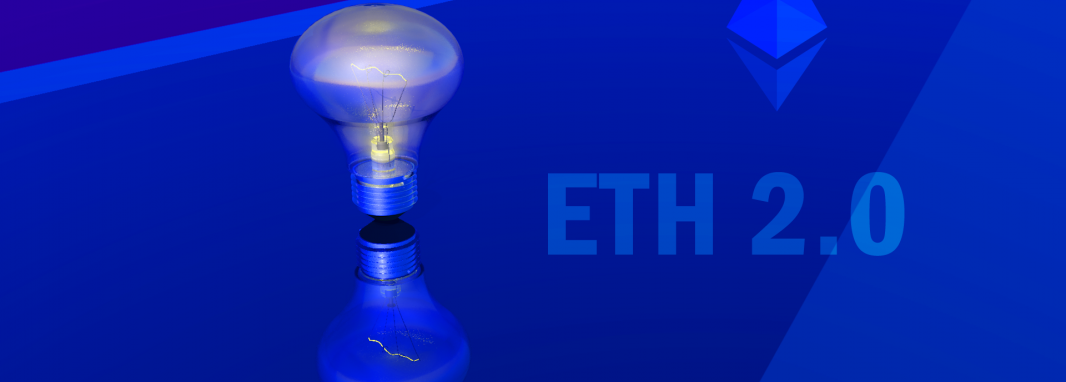Ethereum is on a roll and is the most popular due to its ERC standards. However, there was a significant drawback: power consumption. It's because of the PoW consensus.
As of last week, Ethereum has successfully completed The Merge, which means that it moved to a better consensus algorithm. This changes A LOT. Read more below.
We will help you with your Blockchain project!
Ethereum is probably the first thing that comes to mind when people hear about a blockchain. Small wonder, more than seven years have passed since the inception of Ethereum, but it still remains the leader among blockchains.
The digital world is constantly evolving. After the emergence of Ethereum, other players in the blockchain market have appeared and are also rapidly gaining momentum.
To maintain its position, Ethereum must meet the modern market's requirements.
What is Proof of Work?
Since its inception, Ethereum has used a form of cryptographic proof called Proof-of-Work (PoW). The term Proof-of-Work originated over twenty years ago and became well known in the cryptocurrency world thanks to Bitcoin.
Proof-of-Work is a mechanism of a consensus of such things as the order of transactions, account balances, etc. This mechanism protects the Ethereum network from hacker attacks and manipulation by intruders.
PoW is a time-tested mechanism used by the well-known Bitcoin. And compared to other algorithms, it is relatively easy to implement.
However, despite its effectiveness, PoW has a huge drawback. This disadvantage is excessive energy consumption. Just take a look: to ensure the security and decentralization of the network, Ethereum consumes 73.2 TWh annually. This amount of energy can power a medium-sized European country. Impressive, isn't it? But as a result, a buyer covers all expenditures for energy consumption. Moreover, excessive energy consumption causes significant damage to the environment.
Alas, that's not all the flaws of PoW.
Increasing production capacity can lead users to dominance in mining. Further mining dominance can pose a serious threat to decentralization and hence the network's security.
Is Proof-of-Stake better than Proof of Work?
In view of the above, it would be good to consider the use of other mechanisms that can solve the issue of excessive energy consumption. This step is exactly what the developers of Ethereum did. They thought of another consensus mechanism known as Proof-of-stake (PoS). Proof-of-Stake achieves same goals as Proof-of-Work, but in a conceptually different way.
The idea of this consensus appeared more than ten years ago, and a year later, it was implemented in cryptocurrency. So at the time of the emergence of the Ethereum blockchain, both consensus mechanisms had already existed. However, the creators of Ethereum then preferred the PoW mechanism.
Let's take a look under the hood of this mechanism. Computational power is fundamental to PoW. However, for PoS, this does not matter, as this method has replaced miners with validators. Validators stake their ether into a smart contract on Ethereum to create new blocks on the chain. If the validator is dishonest, it will lose its bet. That is, this rate works as a guarantee. The agreement of 2/3 validators is enough to finalize the block. There is no competition between validators to create new blocks because the algorithm selects validators randomly.
Validators are responsible for checking new blocks, so they must be sure that new blocks are valid.
There are a lot of advantages that make PoS better than PoW. First, in PoW, you need expensive equipment, which is a touchstone for this mechanism. In the case of PoS, there is no need to invest in elite hardware if you want to participate in the creation of new chain blocks.
The second benefit follows from this: the emergence of many validators significantly reduces the risk of centralization.
The third benefit improves chain security against 51% style attacks due to economic sanctions against dishonest players.
And finally, one of the most long-awaited benefits for the followers of Ethereum is a significant reduction in energy consumption and, as a result, a decrease in the carbon footprint. This aspect is what the public has been waiting for so long, NFT minting on Ethereum without harming the environment.
According to ethereum.org, the transition of Ethereum to PoS is expected to reduce the energy consumption for securing Ethereum by more than 99.95%. Therefore, total energy expenditure will be about 0.01 TWh per year.
So here is a riddle. How is it safe for the Ethereum network to switch from PoW to PoS? Because the network is still working and it contains user accounts, their balances, smart contract data, etc. The developers called this process The Merge.
What is The Merge?
The developers launched another network based on Ethereum, introducing the PoS mechanism into its ecosystem. This creation was called The Beacon Chain. The Beacon Chain is a network that runs in parallel with the main Ethereum network (Mainnet). Now developers have merged these networks — the Beacon Chain proof-of-stake system with the Ethereum Mainnet. The Merge was done "on-the-fly," without stopping the operation of networks. It's like changing the sails on a frigate without driving it to the shipyard.
So The Age of PoW became a history for Ethereum.
In addition to huge energy savings, The Merge gives hope to Ethereum fans that they will soon get decent scalability and sharding.
It undoubtedly pushes the boundaries for the most popular blockchain.
UPD: We make a new article about merge - Ethereum after the merge. What do we have, and what will happen next? Check it for last info on topic.
Conclusion
As you can see from the above, the new version of Ethereum opens up new possibilities in the blockchain world.
A couple weeks ago we were advising most of our clients to use other networks because of huge gas prices in Ethereum. As of this week, we are inspired by Ethereum again.
If your startup is utilizing Blockchain, our team of highly qualified Blockchain developers from Zfort Group is happy to help you. Our professionals are ready to connect to your project at any stage. We are your forward thinking partner. Zfort Group, at your service!
We will help you with your Blockchain project!






